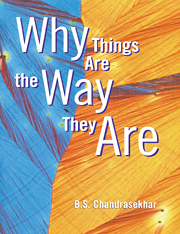Book contents
- Frontmatter
- Contents
- PREFACE
- I INTRODUCTION
- II CRYSTALS
- III PARTICLES AND WAVES
- IV THE ATOM
- V STATISTICAL PHYSICS
- VI THE QUANTUM MECHANICAL CRYSTAL
- VII COPPER WIRES AND GLASS RODS
- VIII SILVER SPOONS AND PLASTIC SPOONS
- IX GLASS PANES AND ALUMINIUM FOILS
- X ELECTRIC BULBS AND INSULATED CABLES
- XI MAGNETS
- XII SUPERCONDUCTORS
- XIII CONCLUSION
- GLOSSARY
- INDEX
IX - GLASS PANES AND ALUMINIUM FOILS
Published online by Cambridge University Press: 20 October 2009
- Frontmatter
- Contents
- PREFACE
- I INTRODUCTION
- II CRYSTALS
- III PARTICLES AND WAVES
- IV THE ATOM
- V STATISTICAL PHYSICS
- VI THE QUANTUM MECHANICAL CRYSTAL
- VII COPPER WIRES AND GLASS RODS
- VIII SILVER SPOONS AND PLASTIC SPOONS
- IX GLASS PANES AND ALUMINIUM FOILS
- X ELECTRIC BULBS AND INSULATED CABLES
- XI MAGNETS
- XII SUPERCONDUCTORS
- XIII CONCLUSION
- GLOSSARY
- INDEX
Summary
Some preliminaries
A sheet of glass is transparent to light, whereas a much thinner sheet of aluminium foil is opaque: materials can be divided into those which let light go through, and others which block it. Examples of the first kind are glass, clear plastics, crystals like sugar and common salt. Metals on the other hand are opaque to light. We know that all these materials are made up of atoms. We saw in chapter IV that the atom itself is mostly empty space, because its nucleus and electrons occupy a tiny fraction of the volume of the atom. We might think therefore that light, which can travel freely through empty space, should be able to go right through all materials, but this clearly is not so. The transparency or opacity of materials results from what happens to the quantum energy states of the electrons when the atoms come together to form a solid.
Colour is another property of materials which must have something to do with how light interacts with them. Metallic copper for example is red and gold is yellow, in daylight. Sapphire is blue and ruby is red. The explanation again lies in the electronic structure of such solids, together with the quantum nature of light, namely that it consists of photons with energy equal to the frequency multiplied by the Planck constant.
- Type
- Chapter
- Information
- Why Things Are the Way They Are , pp. 163 - 187Publisher: Cambridge University PressPrint publication year: 1997

